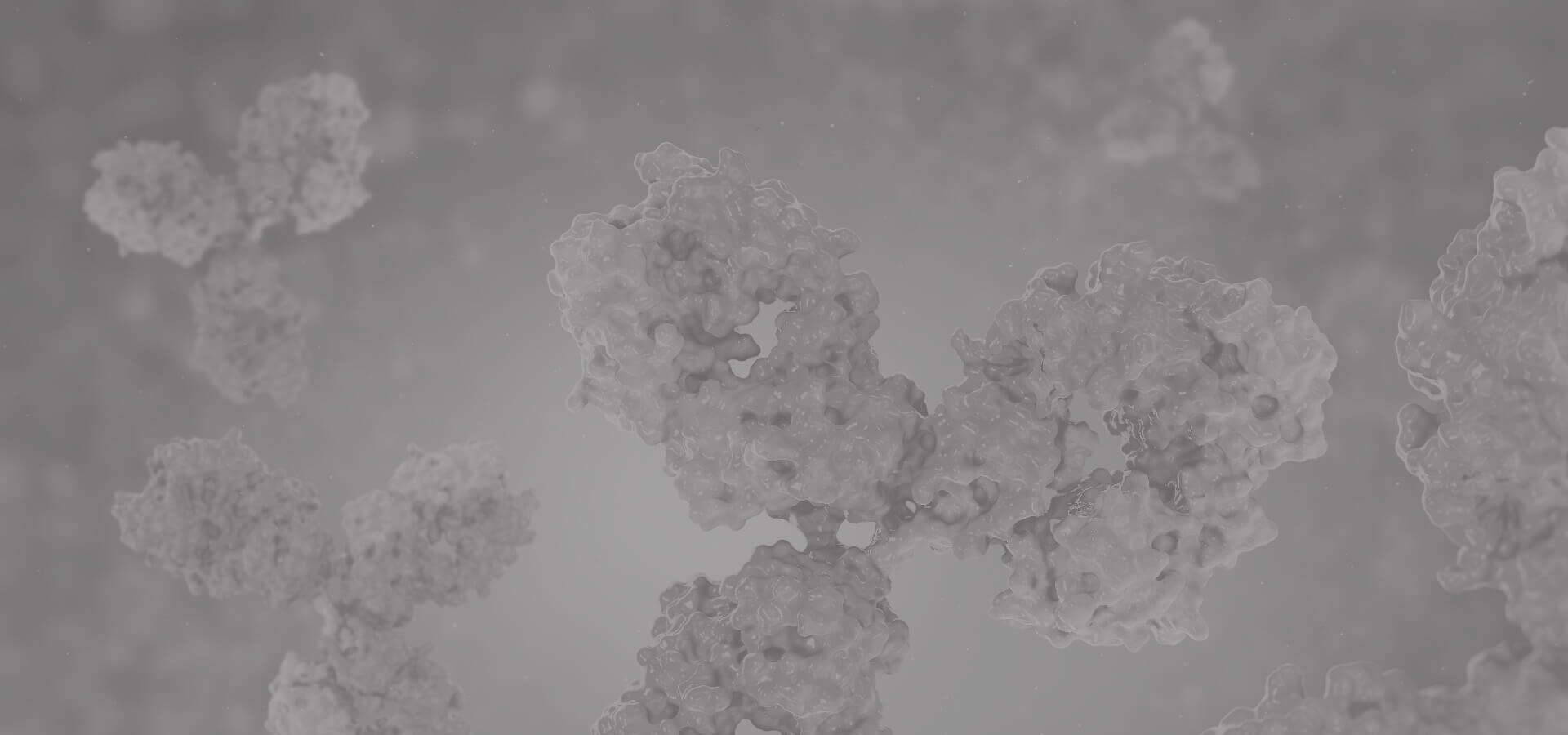HTR2B
This gene encodes one of the several different receptors for 5-hydroxytryptamine (serotonin) that belongs to the G-protein coupled receptor 1 family. Serotonin is a biogenic hormone that functions as a neurotransmitter, a hormone, and a mitogen. Serotonin receptors mediate many of the central and peripheral physiologic functions of serotonin, including regulation of cardiovascular functions and impulsive behavior. Population and family-based analyses of a minor allele (glutamine-to-stop substitution, designated Q20*) which blocks expression of this protein, and knockout studies in mice, suggest a role for this gene in impulsivity. However, other factors, such as elevated testosterone levels, may also be involved. Alternatively spliced transcript variants have been found for this gene. [provided by RefSeq, Mar 2016]
Full Name
5-Hydroxytryptamine Receptor 2B
Biological Process
Activation of phospholipase C activity Source: UniProtKB
Behavior Source: UniProtKB-KW
Calcium-mediated signaling Source: UniProtKB
Cardiac muscle hypertrophy Source: UniProtKB
Cellular calcium ion homeostasis Source: UniProtKB
Cellular response to temperature stimulus Source: UniProtKB
cGMP-mediated signaling Source: UniProtKB
Chemical synaptic transmission Source: GO_Central
Embryonic morphogenesis Source: UniProtKB
ERK1 and ERK2 cascade Source: UniProtKB
G protein-coupled receptor internalization Source: Ensembl
G protein-coupled receptor signaling pathway Source: UniProtKB
G protein-coupled receptor signaling pathway, coupled to cyclic nucleotide second messenger Source: GO_Central
G protein-coupled serotonin receptor signaling pathway Source: UniProtKB
Heart morphogenesis Source: UniProtKB
Intestine smooth muscle contraction Source: UniProtKB
Negative regulation of apoptotic process Source: UniProtKB
Negative regulation of autophagy Source: UniProtKB
Negative regulation of cell death Source: UniProtKB
Neural crest cell differentiation Source: UniProtKB
Neural crest cell migration Source: UniProtKB
Phosphatidylinositol 3-kinase signaling Source: UniProtKB
Phospholipase C-activating G protein-coupled receptor signaling pathway Source: GO_Central
Phospholipase C-activating serotonin receptor signaling pathway Source: UniProtKB
Phosphorylation Source: UniProtKB
Positive regulation of cell division Source: UniProtKB
Positive regulation of cell population proliferation Source: UniProtKB
Positive regulation of cytokine production Source: UniProtKB
Positive regulation of endothelial cell proliferation Source: UniProtKB
Positive regulation of ERK1 and ERK2 cascade Source: UniProtKB
Positive regulation of I-kappaB kinase/NF-kappaB signaling Source: UniProtKB
Positive regulation of MAP kinase activity Source: UniProtKB
Positive regulation of nitric-oxide synthase activity Source: UniProtKB
Positive regulation of phosphatidylinositol biosynthetic process Source: UniProtKB
Protein kinase C-activating G protein-coupled receptor signaling pathway Source: UniProtKB
Protein kinase C signaling Source: UniProtKB
Regulation of behavior Source: UniProtKB
Release of sequestered calcium ion into cytosol Source: UniProtKB
Response to xenobiotic stimulus Source: UniProtKB
Vasoconstriction Source: UniProtKB
Behavior Source: UniProtKB-KW
Calcium-mediated signaling Source: UniProtKB
Cardiac muscle hypertrophy Source: UniProtKB
Cellular calcium ion homeostasis Source: UniProtKB
Cellular response to temperature stimulus Source: UniProtKB
cGMP-mediated signaling Source: UniProtKB
Chemical synaptic transmission Source: GO_Central
Embryonic morphogenesis Source: UniProtKB
ERK1 and ERK2 cascade Source: UniProtKB
G protein-coupled receptor internalization Source: Ensembl
G protein-coupled receptor signaling pathway Source: UniProtKB
G protein-coupled receptor signaling pathway, coupled to cyclic nucleotide second messenger Source: GO_Central
G protein-coupled serotonin receptor signaling pathway Source: UniProtKB
Heart morphogenesis Source: UniProtKB
Intestine smooth muscle contraction Source: UniProtKB
Negative regulation of apoptotic process Source: UniProtKB
Negative regulation of autophagy Source: UniProtKB
Negative regulation of cell death Source: UniProtKB
Neural crest cell differentiation Source: UniProtKB
Neural crest cell migration Source: UniProtKB
Phosphatidylinositol 3-kinase signaling Source: UniProtKB
Phospholipase C-activating G protein-coupled receptor signaling pathway Source: GO_Central
Phospholipase C-activating serotonin receptor signaling pathway Source: UniProtKB
Phosphorylation Source: UniProtKB
Positive regulation of cell division Source: UniProtKB
Positive regulation of cell population proliferation Source: UniProtKB
Positive regulation of cytokine production Source: UniProtKB
Positive regulation of endothelial cell proliferation Source: UniProtKB
Positive regulation of ERK1 and ERK2 cascade Source: UniProtKB
Positive regulation of I-kappaB kinase/NF-kappaB signaling Source: UniProtKB
Positive regulation of MAP kinase activity Source: UniProtKB
Positive regulation of nitric-oxide synthase activity Source: UniProtKB
Positive regulation of phosphatidylinositol biosynthetic process Source: UniProtKB
Protein kinase C-activating G protein-coupled receptor signaling pathway Source: UniProtKB
Protein kinase C signaling Source: UniProtKB
Regulation of behavior Source: UniProtKB
Release of sequestered calcium ion into cytosol Source: UniProtKB
Response to xenobiotic stimulus Source: UniProtKB
Vasoconstriction Source: UniProtKB
Cellular Location
Cell membrane; Synaptosome
Topology
Extracellular: 1-56
Helical: 57-79
Cytoplasmic: 80-90
Helical: 91-113
Extracellular: 114-129
Helical: 130-151
Cytoplasmic: 152-171
Helical: 172-192
Extracellular: 193-216
Helical: 217-239
Cytoplasmic: 240-324
Helical: 325-345
Extracellular: 346-360
Helical: 361-382
Cytoplasmic: 383-481
Helical: 57-79
Cytoplasmic: 80-90
Helical: 91-113
Extracellular: 114-129
Helical: 130-151
Cytoplasmic: 152-171
Helical: 172-192
Extracellular: 193-216
Helical: 217-239
Cytoplasmic: 240-324
Helical: 325-345
Extracellular: 346-360
Helical: 361-382
Cytoplasmic: 383-481
View more
Anti-HTR2B antibodies
+ Filters
 Loading...
Loading...
Target: HTR2B
Host: Mouse
Antibody Isotype: IgG2a
Specificity: Human
Clone: 4A4
Application*: E, WB
Target: HTR2B
Host: Rabbit
Antibody Isotype: IgG
Specificity: Human
Clone: EG1589
Application*: WB: 1:500~1:1000 IHC: 1:50~1:100 IF: 1:00~1:500 ELISA: 1:1000
Target: HTR2B
Host: Mouse
Antibody Isotype: IgG2b, κ
Specificity: Human
Clone: CBFYH-2499
Application*: E
Target: HTR2B
Host: Mouse
Antibody Isotype: IgG2a, κ
Specificity: Human
Clone: CBFYH-2498
Application*: E, WB
Target: HTR2B
Host: Mouse
Antibody Isotype: IgG2b
Specificity: Human
Clone: CBFYH-2497
Application*: E, WB
Target: HTR2B
Host: Mouse
Antibody Isotype: IgG2b
Specificity: Human
Clone: 4F3
Application*: E
More Infomation
Hot products 
-
Mouse Anti-C4B Recombinant Antibody (CBYY-C2996) (CBMAB-C4439-YY)

-
Mouse Anti-CECR2 Recombinant Antibody (CBWJC-2465) (CBMAB-C3533WJ)

-
Mouse Anti-ATG5 Recombinant Antibody (9H197) (CBMAB-A3945-YC)

-
Rat Anti-CCR2 Recombinant Antibody (475301) (CBMAB-C1338-LY)

-
Mouse Anti-CD19 Recombinant Antibody (CBXC-1224) (CBMAB-C1491-CQ)

-
Mouse Anti-CD24 Recombinant Antibody (2Q1282) (CBMAB-C1624-CN)

-
Mouse Anti-CCDC6 Recombinant Antibody (CBXC-0106) (CBMAB-C5397-CQ)

-
Mouse Anti-CFL1 (Phospho-Ser3) Recombinant Antibody (CBFYC-1770) (CBMAB-C1832-FY)

-
Mouse Anti-ENO2 Recombinant Antibody (H14) (CBMAB-E1341-FY)

-
Mouse Anti-AKR1C3 Recombinant Antibody (V2-12560) (CBMAB-1050-CN)

-
Mouse Anti-CCDC25 Recombinant Antibody (CBLC132-LY) (CBMAB-C9786-LY)

-
Mouse Anti-ADGRL2 Recombinant Antibody (V2-58519) (CBMAB-L0166-YJ)

-
Mouse Anti-AFM Recombinant Antibody (V2-634159) (CBMAB-AP185LY)

-
Rat Anti-4-1BB Recombinant Antibody (V2-1558) (CBMAB-0953-LY)

-
Mouse Anti-AOC3 Recombinant Antibody (CBYY-0014) (CBMAB-0014-YY)

-
Rat Anti-CD300A Recombinant Antibody (172224) (CBMAB-C0423-LY)

-
Mouse Anti-BRCA2 Recombinant Antibody (CBYY-1728) (CBMAB-2077-YY)

-
Mouse Anti-APOE Recombinant Antibody (A1) (CBMAB-0078CQ)

-
Mouse Anti-BRD3 Recombinant Antibody (CBYY-0801) (CBMAB-0804-YY)

-
Mouse Anti-ARG1 Recombinant Antibody (CBYCL-103) (CBMAB-L0004-YC)

For Research Use Only. Not For Clinical Use.
(P): Predicted
* Abbreviations
- AActivation
- AGAgonist
- APApoptosis
- BBlocking
- BABioassay
- BIBioimaging
- CImmunohistochemistry-Frozen Sections
- CIChromatin Immunoprecipitation
- CTCytotoxicity
- CSCostimulation
- DDepletion
- DBDot Blot
- EELISA
- ECELISA(Cap)
- EDELISA(Det)
- ESELISpot
- EMElectron Microscopy
- FFlow Cytometry
- FNFunction Assay
- GSGel Supershift
- IInhibition
- IAEnzyme Immunoassay
- ICImmunocytochemistry
- IDImmunodiffusion
- IEImmunoelectrophoresis
- IFImmunofluorescence
- IGImmunochromatography
- IHImmunohistochemistry
- IMImmunomicroscopy
- IOImmunoassay
- IPImmunoprecipitation
- ISIntracellular Staining for Flow Cytometry
- LALuminex Assay
- LFLateral Flow Immunoassay
- MMicroarray
- MCMass Cytometry/CyTOF
- MDMeDIP
- MSElectrophoretic Mobility Shift Assay
- NNeutralization
- PImmunohistologyp-Paraffin Sections
- PAPeptide Array
- PEPeptide ELISA
- PLProximity Ligation Assay
- RRadioimmunoassay
- SStimulation
- SESandwich ELISA
- SHIn situ hybridization
- TCTissue Culture
- WBWestern Blot

Online Inquiry







